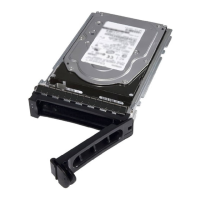Feature Name in WIndows
Remote Access Controller Console (DRAC 4) Remote Access Controller 4 (DRAC 4)
Red Hat Enterprise Linux or SUSE Linux Enterprise Server
After installing Server Administrator, I cannot log in.
Log out and then log in again to access the Server Administrator Command Line Interface (CLI).
I see the following message when I try to install Server Administrator on a guest Linux
operating system.
./srvadmin-install.sh: line 2295 : [: ==: unary operator expected.
When installing Systems Management components on a guest Linux operating system, the warning message may be
displayed. However, the installation continues and completes without any loss of functionality.
I manually installed my Red Hat Enterprise Linux 4 64-bit operating system and can see
RPM dependencies while installing Server Administrator. Where can I find these
dependent RPM files?
For Red Hat Enterprise Linux, the dependent RPM files are on the Red Hat Enterprise Linux installation media. All other
RPMs are available in the
/SYSMGMT/srvadmin/linux/RPMS/supportRPMS\opensource-components directory. To install
or update all the dependent RPM files execute the following command:
rpm –ivh /SYSMGMT/srvadmin/linux/RPMS/ supportRPMS/opensource-components
You can then continue with the Server Administrator installation.
I have performed a non-default install of the Linux operating system using the Linux
operating system media, I see missing RPM file dependencies while installing Server
Administrator?
Server Administrator is a 32-bit application. When installed on a system running a 64-bit version of Red Hat Enterprise
Linux operating system, the Server Administrator remains a 32-bit application, while the device drivers installed by
Server Administrator are 64-bit. If you attempt to install Server Administrator on Red Hat Enterprise Linux (versions 5 and
version 6) for Intel EM64T, ensure that you install the applicable 32-bit versions of the missing RPM file dependencies.
The 32-bit RPM versions always have
i386 in the file name extension. You may also experience failed shared object files
(files with so in the file name extension) dependencies. In this case, you can determine which RPM is needed to install
the shared object, by using the RPM --whatprovides switch. For example: rpm -q --whatprovides
libpam.so.0
An RPM name such as
pam-0.75-64 could be returned, so obtain and install the pam-0.75-64.i386.rpm. When Server
Administrator is installed on a system running a 64-bit version of Linux operating system, ensure that the compat-libstdc
++-<version>.i386.rpm RPM package is installed. You need to resolve the dependencies manually by installing the
missing RPM files from the Linux operating system media.
NOTE
: If you are using later versions of supported Linux operating systems and the RPM files available in the
directory SYSMGMT/srvadmin/linux/RPMS/supportRPMS on the DVD are incompatible, use the latest RPMs from
the operating system media.
86

